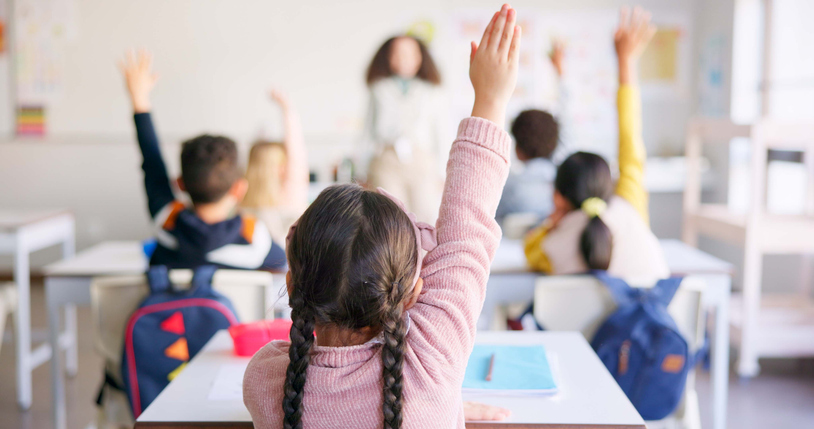Five years ago in March 2020, schools fell silent as Covid-19 swept across the world. At first, there was a tinge of excitement among some students and staff; it was as if, perhaps, we had been told that the whole country was going to be snowed in for six weeks.
Had the restrictions thawed within a couple of months, the impact on at least some children’s education might even have been positive. New experiences stretch the mind, after all. But it didn’t work out like that. While pubs, restaurants and hairdressers re-opened on 4 July, schools stayed on remote teaching until September.
This generation of children was let down badly in the pandemic
Meanwhile, daily government press conferences, laced ‘R numbers’, infection rates, hospital admissions and excess deaths, instilled a sense of fear that also impacted on children. The world is not a safe place – indeed, it has never been a safe place – but we were told that risk must be avoided at all cost. Draconian policies – remember the four tiers of misery? – were underpinned by fear and policed ruthlessly.
The impact was bad enough on those of us who had been around a while and were used to managing risk. It was harder for children to keep a sense of perspective during their formative years. Real life, they were told, was dangerous. No wonder that so many of them retreated to screens and social media. But youngsters were not significantly at risk from Covid. The restrictions they suffered protected the elderly and the vulnerable.
Even when children returned to school, the new academic year was like nothing we had known before. My classroom was demarcated by two lines of red and white tape: one zone for me and one for the ‘bubble’ into which my pupils had been corralled. Never mind that even a fart could cross this no-man’s land with ease, the illusion of safety trumped everything. Mandatory facemasks were similarly useless at preventing that particular form of communication, but they effectively muffled voices and shrouded facial expressions from view.
The first lockdown was probably inevitable. Two recent novel viruses had been genuinely terrifying. The SARS outbreak of 2003 left a case fatality rate of about 10 per cent. A decade later, the mortality rate from MERS was around 35 per cent. They were both respiratory diseases and both caused by coronaviruses. But certainly, by the autumn of 2020, it was clear that Covid-19 was much less severe. It was prevalent, though: one positive test would send an entire bubble of children back to their homes to be quarantined. The disruption to teaching and learning continued, but most of us at least were able to turn up to school every day during the ‘Halloween’ lockdown of November 2020.
Then, just after Christmas, schools were shut for the best part of another term. Mary Bousted, joint general secretary of the National Education Union (NEU), had demanded that ministers ‘do their duty’ by closing all primary and secondary schools to contain the virus. But to be fair on the NEU, the government had already put the fear of death into teachers. Plans for pupils to return later in January 2021 came to nothing. I went into school regardless. I could broadcast my lessons from there as well as I could from home but, crucially, I also enjoyed the company of other teachers who had also gone into work. I might be an introvert but I am also human, and human beings are social animals.
By now, the novelty of remote teaching had worn off. Besides, the spring term is crucial teaching time and children needed to be provided with lots of work. Some of them did it but too many gave up. Unlike me, they were cooped up at home, and during ‘live lessons’ their cameras needed to stay off. Some of them contributed their voices, but all I could see on my screen was an array of avatars. It was telling which avatars did not log off at the end of the lesson. Likely they had disappeared long before. All I could do was log my concerns. That went on for two long months.
I teach in a secondary school; in primary schools, the restrictions were arguably worse. A group of 16-year-olds might have coped with a worksheet on Newton’s Laws of Motion, before uploading it to the Google classroom and ultimately discussing it in breakout rooms after reading my feedback. But it’s harder for six-year-olds, especially those without a parent alongside them. For them, the two years of restrictions were a third of their lifetime, dominating crucial developmental phases that can never be repeated.
The legacy will be with us for life. Not surprisingly, school attendance has not recovered to pre-pandemic levels. In the current academic year, overall absence rates are running 6.6 per cent; previously it ranged between 4.5 per cent and 4.8 per cent. Meanwhile, there are reports of an ‘alarming’ surge in mental illness among young people. The classroom bubbles may be gone, but social media bubbles never went away.
This generation of children was let down badly in the pandemic. We must invest not only in education and training, but specifically in that generation of youngsters who paid a heavy price during Covid. If ever again we need to balance the needs of the young with the needs of the elderly in a crisis, then a more equitable solution must be found. Children are the future, and they are our future. We need to look after them, not lock them down.








Comments